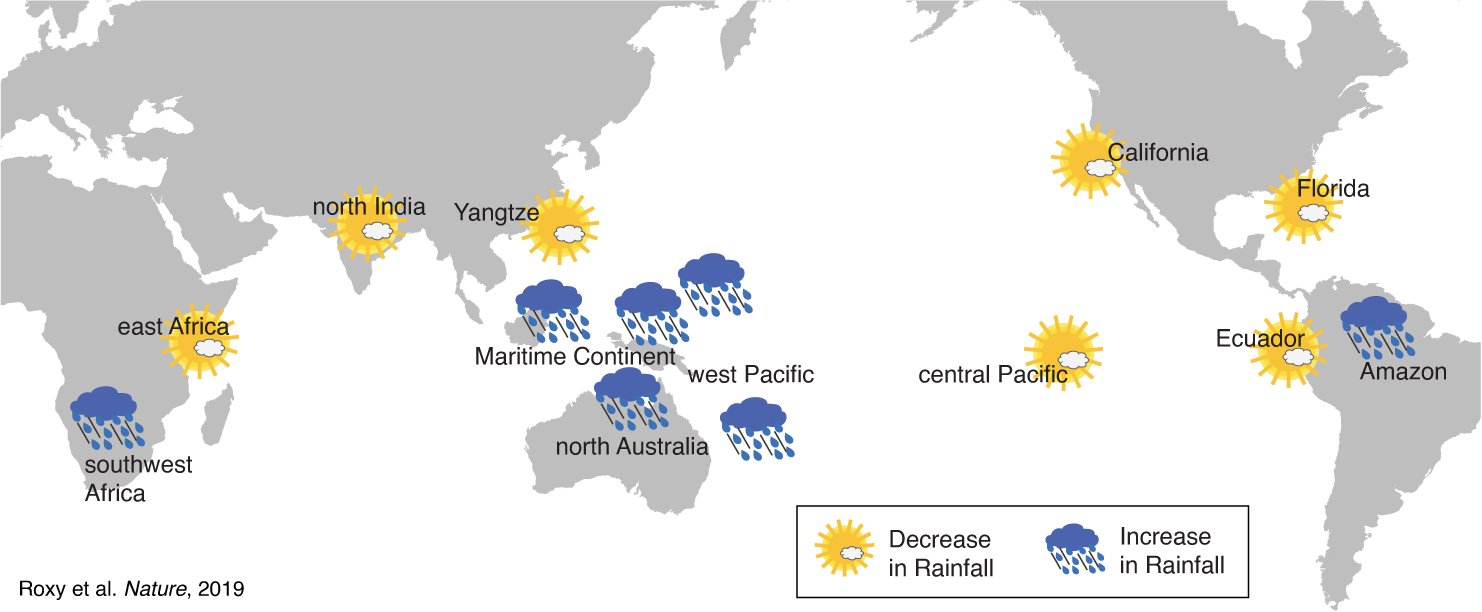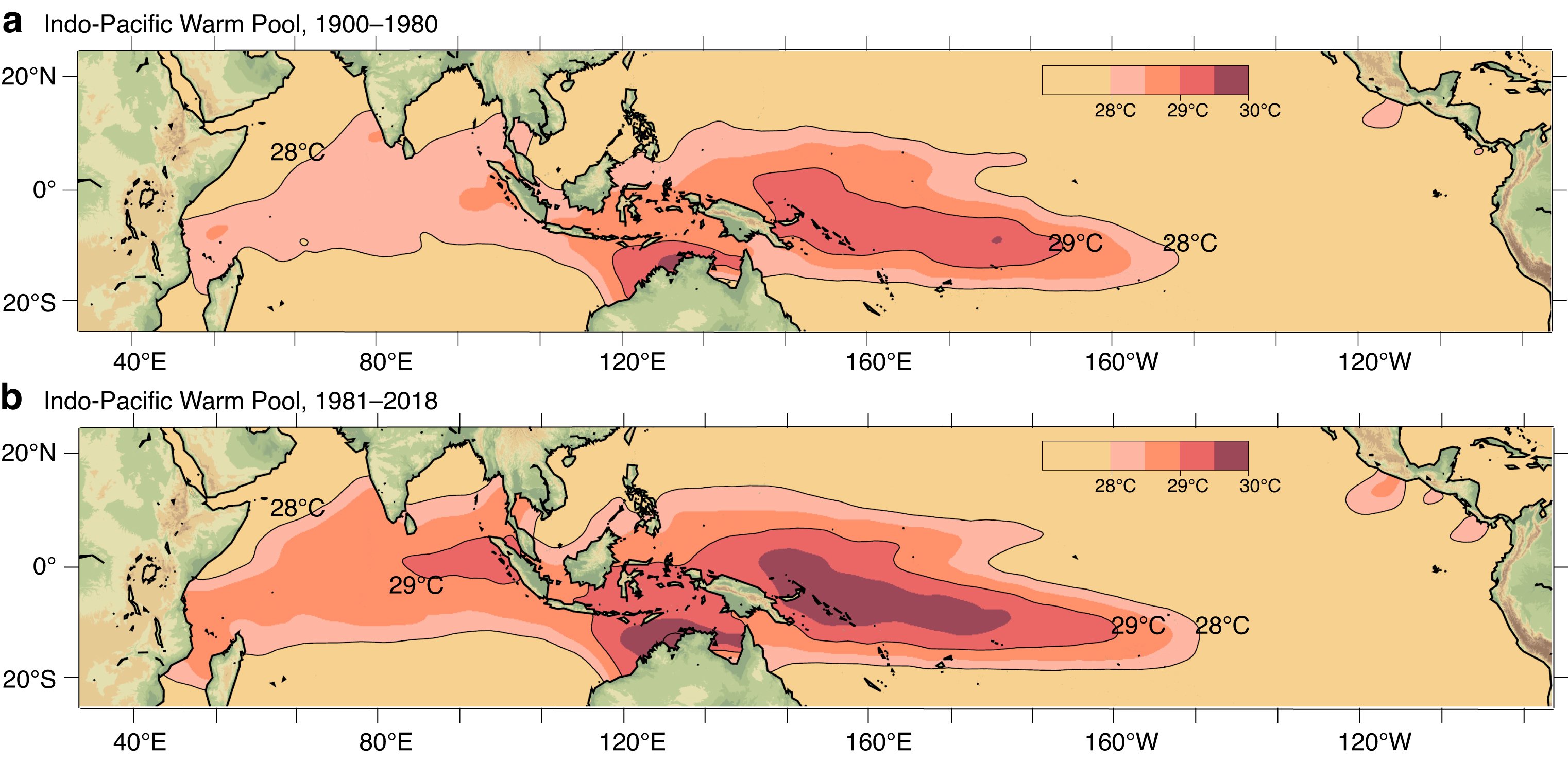The rainfall pattern across the globe is likely changing due to rapid warming of the Indo-Pacific Ocean, reports a study led by Roxy Mathew Koll of the Indian Institute of Tropical Meteorology (IITM), Pune.
In the study published in the journal Nature, the researchers report a twofold expansion of the IndoPacific warm pool—the largest expanse of the warmest ocean temperatures on Earth. They find that the expansion of warm pool has altered the most dominant mode of weather fluctuation originating in the tropics, known as the Madden Julian Oscillation (MJO).
The changes in MJO behavior have increased the rainfall over northern Australia, west Pacific, Amazon basin, southwest Africa and southeast Asia (Indonesia, Philippines and Papua New Guinea). At the same time these changes have brought a decline in rainfall over central Pacific, along the west and east coast of United States (e.g., California), north India, east Africa, and the Yangtze basin in China.

[ad_336]
The MJO is characterized by a band of rain clouds moving eastward over the tropics. The MJO regulates tropical cyclones, the monsoons, and the El Niño cycle—and occasionally contributes to severe weather events over Asia, Australia, Africa, Europe and the Americas. The MJO travel a stretch of 12,000–20,000 kms over the tropical oceans, mainly over the Indo-Pacific warm pool, which has ocean temperatures generally warmer than 28°C.
This Indo-Pacific warm pool has been warming rapidly and expanding during the recent decades in response to increasing carbon emissions. The warm pool expanded double its size, from an area of 2.2 × 107 km2 during 1900–1980, to an area of 4 × 107 km2 during 1981–2018. The rate of expansion is 4 × 105 km2, an area equal to the size of California, every year.

[rand_post]
Though the entire Indo-Pacific has warmed, the warmest waters are over the west Pacific, creating a temperature contrast that drives moisture from the Indian Ocean to the west Pacific Maritime Continent, enhancing the cloud formation there. As a result, the lifecycle of MJO has changed. The residence time of MJO clouds have shortened over the Indian Ocean by 4 days (from an average of 19 days to 15 days). Over the west Pacific, it increased by 5 days (from an average of 18 days to 23 days). It is this change in the residence time of MJO clouds that has altered the weather patterns across the globe.
“There are coordinated international efforts underway to extend the range of accurate weather forecasts out to lead times of two to four weeks and the MJO is one of the most important keys to the success of this enterprise,” noted Michael McPhaden, Senior Scientist at the U.S. National Oceanic and Atmospheric Administration (NOAA), who participated in the study. “Our results provide a critical benchmark for determining which computer models to trust for extended range weather forecasting, based on their ability to simulate the observed behavior of the MJO in a changing climate”.

“Climate model simulations indicate that continued warming of the Indo-Pacific Ocean is highly likely, which may further intensify these changes in global rainfall patterns in the future,” said Koll. “This means that we need to enhance our ocean observational arrays to monitor these changes accurately, and update our climate models to skillfully predict the challenges presented by a warming world” he said.
The study is part of an Indo-US collaboration, between the Ministry of Earth Sciences (India) and the U.S. National Oceanic and Atmospheric Administration (NOAA), facilitated by the U.S. National Academy of Sciences. Koll conducted the research in collaboration with other scientists—Panini Dasgupta (IITM), Michael McPhaden and Chidong Zhang (NOAA), Deahyun Kim (University of Washington) and Tamaki Suematsu (University of Tokyo).